Head of a Human Body of a Lion
The following is a list of hybrid entities from the folklore tape grouped morphologically based on their elective species. Hybrids not found in classical mythology but developed in the context of modern popular culture are listed in a separate department. For actual hybridization in zoology, see Hybrid (biology).
Partly human [ edit ]
Upper role human [ edit ]
Human-ungulate hybrids [ edit ]
Taur-hybrids (centauroid) [ edit ]
Taurs are a class of mythological horse people with physically humanoid upper part and four-legged animal lower office.
- Anggitay – A strictly-female creature that has the upper body of a human with the lower body of a horse.
- Centaur – A creature that has the upper trunk of a human with the lower body of a horse.
- Onocentaur – A creature that has the upper body of a human being with the lower body of a ass.
- Ipotane – A human being with the hindquarters of a equus caballus.
- Minotaur – A beast that has the body of a homo with the head and tail of a bull.
Human being-goat hybrids [ edit ]
Goat people are a class of mythological beings who physically resemble humans from the waist upwardly, and had goat-similar features usually including the hind legs of goats. They fall into various categories, such equally sprites, gods, demons, and demigods. [i]
- Faun – An ancient Roman nature spirit with the body of a man, but the legs and horns of a goat. [2] [3] Originally they differed from the Greek satyrs because they were less frequently associated with drunkenness and ribaldry and were instead seen as "shy, woodland creatures". [4] Starting in the first century BC, the Romans frequently conflated them with satyrs and, after the 2d century Ad, the two are virtually indistinguishable. [ii] [3] [four]
- Glaistig – A Scottish fairy or ghost who can take the form of a goat-human hybrid. [5] [half dozen]
- Krampus — A Germanic mythical effigy of obscure origin. It is often depicted with the legs and horns of a caprine animal, the body of a human being, and animalistic facial features.
- Pan – The god of the wild and protector of shepherds, who has the body of a man, but the legs and horns of a goat. He is ofttimes heard playing a flute.
- Satyr – Originally an ancient Greek nature spirit with the body of a man, but the long tail and pointed ears of a equus caballus. [ii] [3] From the kickoff, satyrs were inextricably associated with drunkenness and ribaldry, known for their love of wine, music, and women. [ii] [three] [7] By the Hellenistic Period, satyrs gradually began to be depicted every bit men with the horns and legs of goats, likely due to conflation with Pan. [two] [3] They were eventually conflated with the Roman fauns and, since roughly the 2nd century Advert, they have been duplicate from each other. [2] [3] [four]
Man-bird hybrids [ edit ]
A medieval depiction of a harpy every bit a bird-woman
- Alkonost – A creature from Russian folklore with the head of a woman with the trunk of a bird, said to brand beautiful sounds that make anyone who hears them forget all that they know and not want anything more ever once more.
- Gamayun – A Russian creature portrayed with the caput of a woman and the body of a bird.
- Inmyeonjo – A human face up with bird trunk beast in ancient Korean mythology.
- Harpy – A half-bird, half-woman animate being of Greek mythology, portrayed sometimes as a woman with bird wings and legs.
- Kinnara – Half-homo, half-bird in subsequently Indian mythology.
- Lamia – Adult female with duck anxiety.
- Lilitu – A woman with bird legs (and sometimes wings) constitute in Mesopotamian mythology.
- Siren – Half-bird, half-woman creature of Greek mythology, who lured sailors to their deaths with their singing voices.
- Sirin – Half-bird, half-human being beast with the head and chest of a woman from Russian folklore. Its bird one-half is generally that of an owl's body.
- Uchek Langmeidong - A one-half-woman and half-hornbill animal in Manipuri folklore, depicted as a daughter who was turned into a bird to escape from her stepmother'due south torture in the absenteeism of her father.
Human-fish hybrids [ edit ]
- Atargatis – Human face, fish body.
- Auvekoejak – A hirsuite merman from Inuit sociology of Greenland and northern Canada.
- Ceasg – A Scottish mermaid.
- Ichthyocentaurs – Creatures that have the torsos of a human being or woman, the front legs of a equus caballus, and the tails of a fish.
- Jengu – A water spirit
- Matsya – An avatar of Lord Vishnu that is half-man half-fish.
- Merfolk – A race of half-man, one-half-fish creatures. The males are called Mermen and the females are chosen Mermaids.
- Sirena – A mermaid from Philippine folklore.
- Siyokoy – Mermen with scaled bodies from Philippine folklore. Information technology is the male counterpart of the Sirena.
- Triton - A Greek God and the son of Poseidon who has the same description as the Merman. Some depictions take him with two fish tails.
Homo-snake hybrids [ edit ]
- Draconcopedes (snake-feet) – "Ophidian-feet are big and powerful serpents, with faces very like those of human maidens and necks ending in serpent bodies" as described by Vincent of Beauvais. [viii]
- Echidna – A one-half-adult female and one-half-serpent monster that lives within a cave.
- Fu Xi – A god said to have been made by Nu Wa.
- Ketu – An Asura who has the lower parts of a snake and said to have four artillery.
- Lamia – Like a mermaid but with the lower body like that of a snake and is ordinarily female. This is not be confused with the Greco-Roman Lamia, who'southward a child-eating monster or later, a night-haunting spirit.
- Nāga – A term referring to human being/snake mixes of all kinds.
- Nü Wa – A woman with the lower body of a serpent in Chinese sociology.
- Nure-onna – A creature with the head of a woman and torso of a serpent.
- Tlanchana – An aquatic deity that is part woman and function snake.
- Zhuyin – A fauna with the face of a man and the body of a snake.
- Orochimaru - A human the has the abilities and tin can become a snake with a man head.
Other hybrids [ edit ]
- Adlet – A human with domestic dog legs.
- Bes – An Egyptian god with the hindquarters of a lion.
- Kurma – Upper-half human, lower half tortoise.
- Kusarikku – A demon with the caput, arms, and body of a human and the ears, horns, and hindquarters of a bull.
- Manticore - A creature with the face of a homo, the body of a lion, the wings of a bat or a dragon and the tail of a scorpion
- Nandi – Some Puranas describe Nandi or Nandikeshvara every bit bull-faced, with a human torso that resembles that of Shiva in proportion and aspect.
- Penghou – A animate being with the face up of a human and the trunk of a dog.
- Scorpion Man – Half-man one-half-scorpion.
Human-headed, complex body (oft with parts from multiple animals) [ edit ]
- Avatea – A Mangaian god that has the right one-half of a man and the left half of a fish.
- Bai Ze – A creature from Chinese mythology with the caput of a human and the body of a cattle with six horns and nine eyes.
- Buraq – A creature from Standard arabic iconography that has the caput of a man and the body of a winged horse.
- Hatuibwari – A dragon-similar creature with the head of a human with four optics, the body of a ophidian, and the wings of a bat.
- Kamadhenu – A bovine fauna with the head of a human, the torso of a cow, the wings of a pigeon, and the tail of a peacock.
- Lamassu – A deity that is frequently depicted with a human head, a balderdash's torso or lion'southward body, and an eagle'south wings.
- Meduza – A sea creature from Russian folklore with the head of a maiden and the trunk of a striped beast, having a dragon tail with a ophidian'south oral fissure and elephant legs with the same snake mouths.
- Sphinx – A creature with the head of a human or a cat, the body of a king of beasts, and occasional wings of an eagle.
Human with fauna head [ edit ]
- Abraxas – A god-similar Gnostic fauna with many different types of portrayals, many of which as unlike types of hybrids.
- Anubis – The jackal-headed Egyptian God.
- Baphomet – Traditionally depicted as an anthropomorphic creature with goat's head
- Bastet – The cat-headed Egyptian Goddess.
- Bird goddess – Vinca figures of a woman with a bird head
- Capelobo - A creature from Brazilian folklore with the head of an anteater, the torso of a human, and the legs of a goat.
- Chi You – A creature from Chinese mythology with the caput of a balderdash, the torso of a human and the ears and hindquarters of a acquit.
- Cuca - A animal from Brazilian sociology and female person analogue of the Coco that is depicted every bit a witch with the head of an alligator. It will catch and eat children that disobey their parents.
- Cynocephalus – A canis familiaris-headed creature.
- Daksha – His caput was replaced by a goat's head afterwards a beheading.
- Ganesha – An elephant-headed God.
- Hayagriva – A horse-headed avatar.
- Heqet – The frog-headed Egyptian God.
- Horse-Face up – A horse-headed guardian or type of guardian of the Underworld in Chinese mythology.
- Horus, Monthu, Ra, and Seker – Each of these Egyptian Gods has the head of a falcon or hawk.
- Karasu-tengu – A crow-type Tengu.
- Karura – A divine creature of Japanese Hindu-Buddhist mythology with the caput of a bird and the torso of a human.
- Khepri – The dung beetle-headed Egyptian God.
- Khnum – The ram-headed Egyptian God.
- Kuk – Kuk's male form has a frog head while his female person form has a ophidian head.
- Maahes, Pakhet, Sekhmet, and Tefnut – Each of these Egyptian Gods has the head of a lion.
- Meretseger – The cobra-headed Egyptian Goddess.
- Minotaur – A brute with the head of a bull and the body of a man. Some depictions have it besides sporting the tail and/or hindquarters of a bull.
- Nandi – Some Puranas describe Nandi or Nandikeshvara as bull-faced, with a human body that resembles that of Shiva in proportion and aspect.
- Narasimha – A Hindu deity with a panthera leo-like face.
- Ox-Head – An ox-headed guardian or blazon of guardian of the Underworld in Chinese mythology.
- Pratyangira – A Hindu Goddess having the caput of a lion.
- Sekmet – The lioness-headed Egyptian Goddess.
- Set – The dog-headed Egyptian God.
- Sobek – The crocodile-headed Egyptian God.
- Taweret – The hippopotamus-headed Egyptian Goddess.
- Tikbalang - A tall Filipino horse-headed homo.
- Thoth – The ibis-headed Egyptian God.
- Varaha – A boar-headed avatar.
- Zhu Bajie – A pig-headed major graphic symbol of the novel Journey to the West .
Human being with added animal parts [ edit ]
- Winged
- Angel – Humanoid creatures who are generally depicted with bird-like wings. In Abrahamic mythology and Zoroastrianism mythology, angels are frequently depicted as chivalrous angelic beings who act every bit messengers between God and humans.
- Fairy – A humanoid with insect-like wings.
- Mothman – A humanoid moth.
- Seraph – An aristocracy angel with multiple wings.
- Winged genie – A humanoid with bird wings.
- Legs
- Anansi - A Due west African god, too known as Ananse, Kwaku Ananse, and Anancy. In the Americas he is known as Nancy, Aunt Nancy and Sis' Nancy. Anansi is considered to exist the spirit of all knowledge of stories. He is also one of the most important characters of West African and Caribbean folklore. Anansi is depicted in many different ways: sometimes he looks similar an ordinary spider, sometimes he is a spider wearing clothes or with a human face up, and sometimes he looks much more similar a human being with spider elements, such as eight legs.
- Drakaina – A female species from Greek mythology that is draconian in nature, primarily depicted as a woman with dragon features.
- Horned
- Snake-haired
Office brute, part homo (transitioning between the two) [ edit ]
- Garuda – A animal that has the head, wings, and legs of an eagle and body of a man.
- Pamola - A creature from Abenaki mythology with a human body, the caput of a moose, and wings and anxiety of an eagle that protects Maine's tallest mountain.
- Selkie – A seal that becomes a human past shedding its skin on state.
- Werecat – A beast that is office cat, part human, or switches between the two.
- Werewolf – A creature that becomes a wolf/human-similar beast during the nights of full moons, but is human otherwise.
Non-man [ edit ]
Quadrupeds with the wings of a bird [ edit ]
- Peryton – A deer with the wings of a bird.
- Winged Cat – A cat with the wings of a bird.
- Winged horse – A horse with the wings of a bird. *Pegasus is the proper name of the winged horse, not the species
- Winged Lion – A lion with the wings of a bird.
Two kinds of brute parts [ edit ]
Item of the embroidered clothes of an Apkallu, showing a pair of 4-legged winged animals. From Nimrud, Iraq. 883-859 BCE. Aboriginal Orient Museum, Istanbul
- Allocamelus – A Heraldic brute that has the head of a donkey and the body of a camel.
- Cockatrice – A mix between a chicken and a reptile.
- Cerberus – A Greek mythological dog that guarded the gates of the underworld, about always portrayed with 3 heads and occasionally having a mane of serpents, likewise every bit the front half of one for a tail.
- Criosphinx – A Sphinx that has the head of a ram.
- Feathered serpent - A Mesoamerican spirit deity that possessed a snake-like torso and feathered wings.
- Gajamina – A creature with the caput of an elephant and body of a fish.
- Gajasimha – A creature with the head of an elephant and the trunk of a lion.
- Griffin – A beast with the forepart quarters of an eagle and the hind quarters of a lion.
- Gye-lyong – A creature with the head of a chicken and the body of a dragon.
- Hieracosphinx – A type of Sphinx that had a falcon head.
- Hippalectryon – A fauna with the front half of a horse and the rear half has a rooster's wings, tail, and legs.
- Hippocampus (or Hippocamp) – A Greek mythological creature that is one-half-horse half-fish.
- Hippogriff – A creature with the front quarters of an hawkeye and hind quarters of a horse.
- Longma – A winged equus caballus with dragon scales.
- Merlion – A creature with the head of a king of beasts and the trunk of a fish.
- Ophiotaurus – A creature that has the upper body of a bull and the lower body of a ophidian.
- Capricorn – A beast that is half-goat one-half-fish, and identified with the constellation Capricornus.
- Serpopard – A animal that is part-snake and part-African leopard.
- Shug Monkey – A creature that is part-monkey and part-dog.
- Skvader – A Swedish animal with the forequarters and hind-legs of a hare and the back, wings and tail of a female wood bickering.
- Tatzelwurm – A creature with the face of a cat and a serpentine body.
- Ushi-oni – A Yōkai with the head of a bull and the body of a spider.
Three kinds of animal parts [ edit ]
- Ammit – An Egyptian creature with the caput of a crocodile, the front legs of a panthera leo, and the back legs and hindquarters of a hippopotamus.
- Chalkydri – Creatures with twelve angel wings, the body of a panthera leo, and the head of a crocodile mentioned in 2 Enoch [10]
- Bubble – A Greek mythology fauna with the caput and front legs of a lion, the head and dorsum legs of a goat, and the head of a snake for a tail. Said to exist able to breathe fire from lion's oral fissure.
- Jackalope – A jackrabbit with the horns of a whitetail deer.
- Sharabha – A Hindu mythological brute having the head of a lion, the legs of deer, and the wings of bird.
- Simurgh – A griffin-like creature of Persian mythology with the caput of a canis familiaris, the body of a lion and the wings of a hawk.
- Wyvern – A animate being with a dragon'southward head and wings, a reptilian body, two legs, and a tail often catastrophe in a diamond- or arrow-shaped tip.
Four kinds of animal parts [ edit ]
- Enfield – A Heraldic creature with the head of a play a joke on, the forelegs and sometimes wings of an hawkeye, the trunk of a lion, and the tail of a wolf.
- Hatsadiling – A mythical creature with the caput and torso of a panthera leo, body and tusks of an elephant, the comb of a rooster, and the wings of a bird. [eleven]
- Monoceros – A creature with the head of a deer, the body of a horse, the anxiety of an elephant, and the tail of a hog.
- Nue – A Japanese Chimera with a monkey head, tiger legs, dog trunk, and the front half of a snake for a tail.
- Questing Animate being – A fauna with the head and tail of a serpent, the feet of a deer, the body of a lion, and the haunches of a leopard.
- Tarasque – A French dragon with the head of a lion, 6 brusque legs like to that of bear legs, the body of an ox, the beat of a turtle, and a scorpion stinger-tipped tail.
- Wolpertinger – A animal with the head of a rabbit, the antlers of a deer, and the legs and wings of a bird.
- Yali – A Hindu beast with the head of a lion, the tusks of an elephant, the trunk of a cat, and the tail of a serpent.
- Ypotryll – A Heraldic brute with the tusked head of a boar, the humped body of a camel, the legs and hooves of an ox or caprine animal, and the tail of a snake.
V or more than kinds of brute parts [ edit ]
- Alebrije – A brightly colored creature from Mexican mythology.
- Baku – A Japanese creature with the head of an elephant, the ears of a rhino, the legs of a tiger, the body of a conduct and the tail of a cow.
- Calygreyhound – A mythical brute described as having the caput of a wildcat, the trunk of a deer or antelope, the claws of an eagle as its forefeet, ox hooves, antlers or horns on its caput, the hind legs of a king of beasts or ox and its tail like a panthera leo or poodle.
- Fenghuang – A Chinese creature with the head of a gilt pheasant, the torso of a mandarin duck, the tail of a peacock, the legs of a crane, the mouth of a parrot and the wings of a swallow.
- Kotobuki - A Japanese Chimera with the head of a rat, the ears of a rabbit, the horns of an ox, the rummage of a rooster, the beard of a sheep, the cervix of a Japanese dragon, the mane of a equus caballus, the back of a wild boar, the shoulders and abdomen of a South Prc tiger, the arms of a monkey, the hindquarters of a canis familiaris, and the tail of a snake.
- Navagunjara – A Hindu animal with the caput of a rooster, neck of a peacock, dorsum of a bull, a snake-headed tail, three legs of an elephant, tiger and deer or horse, fourth limb being a human paw holding a lotus.
- Pulgasari /Bulgasari - see Pulgasari for modern rendering
- Pyinsarupa – A Burmese creature fabricated of a bullock, carp, elephant, horse and the dragon.
- Qilin – A Chinese brute with the head of a dragon, the antlers of a deer, the scales of a fish, the hooves of an ox, and the tail of a lion. The Japanese version is described as a deer-shaped dragon with the tail of an ox.
Mod fiction [ edit ]
The following hybrid creatures appear in mod fiction:
- Beast (Beauty and the Beast): The Fauna, from the Disney movie Dazzler and the Fauna , has the head structure and horns of abison, the artillery and body of abear, the eyebrows of agorilla, the jaws, teeth, and mane of alion, the tusks of a boar, and the legs and tail of awolf.
- Cecaelia – One-half-human being, half-octopus. Ursula, from Disney's The Little Mermaid , is a cecaelia.[ citation needed ]
- Cheetaur – Half-man, half-chetah. They are featured in the Quest for Glory video games.[ citation needed ]
- Cervitaur – A deer-type centaur. This description was also used for the Golden Hind from Hercules: The Legendary Journeys .
- Dracotaur – Half-man, one-half-dragon. It debuted in Dungeons & Dragons . It also has a counterpart in the form of the Dragonspawn from the Warcraft franchise. Dragoon from the Monster Rancher franchise also fits this description due to it existence a fusion of a Dragon and a Centaur.[ citation needed ]
- Drider – One-half-Drow half-spider. It debuted in Dungeons & Dragons .
- Gnoll – Vicious hybrid with human-like body and hyena-similar head. It debuted in Dungeons & Dragons and was also featured in World of Warcraft . Inspired from only not resembling the gnoles conceived by Lord Dunsany. [12] Considered one of the "five main "humanoid" races" in AD&D by Paul Karczag and Lawrence Schick. [thirteen]
- Gorilla behave – A creature with the head, body, and legs of a gorilla, and the teeth and arms of a bear. It debuted in Dungeons & Dragons .
- Gwazi – A creature with the caput of a tiger and the body of a lion. This is the mascot of the defunct roller coaster located at the Busch Gardens amusement park in Tampa, Florida.
- Jackalote - A hybrid of a jackal and a coyote. They appear in The Christmas Chronicles 2 where Belsnickel created them through an unknown method so that they would pull his sleigh.
- Jaquin – A fauna that resembles a jaguar with the wings and feathers of macaws. It is featured in Elena of Avalor .[ commendation needed ]
- Kalidahs - One-half tiger, half bear creatures commencement appearing in the book The Wonderful Wizard of Oz by L. Frank Baum.
- ManBearPig – half man, half bear, half pig. Debuted in the animated television series, South Park .
- Miga - A mythical sea creature that is half-killer whale, one-half-Kermode bear who is 1 of the mascots of the 2010 Winter Olympics.
- Owlbear – A brute that is half-bear half-owl. Information technology debuted in Dungeons & Dragons .
- Posleen – A crocodile-headed reptilian centaur from Legacy of the Aldenata .
- Sumi – An animal guardian spirit with the wings of a Thunderbird and the legs of an American black bear who is one of the mascot of the 2010 Winter Paralympics.
- Unitaur – A unicorn-type centaur.[ citation needed ]
- Ursagryph – A fauna with the head, claws, and wings of an eagle and the body of a bear. The Predacon Darksteel from Transformers Prime Animal Hunters: Predacons Rising transforms into a mechanical Ursagryph.
- Vampire-werewolf hybrid – These one-half-vampire half-werewolf hybrids had been shown in various media appearances like AdventureQuest (equally a Werepyre), AdventureQuest Worlds (too as a Werepyre), Axe Cop (as a Wolvye), Supernatural , The Elder Scrolls , The Vampire Diaries , the Underworld franchise (equally a Lycan-dominant vampire hybrids and a Lycan-Corvinus strain hybrid), and Werewolf: The Apocalypse .
- Vinicius – Part-cat, part-monkey, role-bird from Rio 2016.
- Wemic – One-half-man, half-lion. It debuted in Dungeons & Dragons . It besides has a analogue in the form of the Liontaur from the Quest for Celebrity video games.
- Wereape - Half-man, half-ape. They have been featured in Dungeons & Dragons , Forgotten Realms and The Wereworld Serial. They come in dissimilar varieties.
- Weregorilla - A gorilla-type wereape. Two appeared in The Wereworld Series and a monster mask of a weregorilla was advertised in episode 1 of Creepshow .
- Wereorangutan - An orangutan-type wereape. I appeared in The Wereworld Serial.
- Wolftaur – Half-human, half-wolf. It debuted in Dungeons & Dragons . Some depictions of this creature as well take wolf heads like Celious from the Monster Rancher franchise (who is depicted equally a fusion of a Tiger and a Centaur) and AdventureQuest 3D (as a Lychimera).[ citation needed ]
- Zoras - Half-man, half-fish. Appear in most games in The Legend of Zelda franchise.
References [ edit ]
- ^ Nathan Robert Dark-brown (30 September 2014). The Mythology of Grimm: The Fairy Tale and Folklore Roots of the Pop Television Testify . Penguin Publishing Group. pp. 195–. ISBN 978-0-698-13788-ii .
- ^ a b c d east f Riggs, Don (2014). "Faun and Satyr". In Weinstock, Jeffrey Andrew (ed.). The Ashgate Encyclopedia of Literary and Cinematic Monsters. New York City, New York and London, England: Ashgate Publishing. pp. 233–236. ISBN 978-1-4094-2563-ii .
- ^ a b c d e f g Hansen, William F. (2004). Classical Mythology: A Guide to the Mythical World of the Greeks and Romans . Oxford, England: Oxford University Press. pp. 279–280. ISBN 978-0-19-530035-2 .
- ^ a b c Miles, Geoffrey (2009) [1999]. Classical Mythology in English Literature: A Critical Anthology . New York City, New York and London, England: Routledge. p. xxx. ISBN 978-0-203-19483-six .
- ^ Rev. J. G. Campbell, "Superstitions of the islands and Highlands of Scotland", Scottish Celtic Review 4 (1885), pp155, 157, noted in J. G. McKay, "The Deer-Cult and the Deer-Goddess Cult of the Ancient Caledonians" Folklore 43.ii (June 1932), pp. 144–174). p. 152.
- ^ Sue Weaver (xvi April 2011). The Lawn Goat: An Introductory Guide to Keeping and Enjoying Pet Goats, from Feeding and Housing to Making Your Own Cheese . Storey Publishing, LLC. pp. 142–. ISBN 978-1-60342-699-2 .
- ^ a b Due west, Martin Litchfield (2007). Indo-European Poetry and Myth . Oxford, England: Oxford University Printing. p. 293. ISBN 978-0-19-928075-9 .
- ^ Franklin-Brown, Mary (2012). Reading the world : encyclopedic writing in the scholastic age. Chicago London: The University of Chicago Press. p. 258. ISBN 9780226260709 .
- ^ Fritscher, Jack (2004). Popular Witchcraft: Straight from the Witch's Oral cavity. Popular Printing. p. 23. ISBN 0-299-20304-2 .
The pig, goat, dog, ram — all of these creatures are consistently associated with the Devil.
- ^ Platt, Rutherford (1926). The Lost Books of the Bible and the Forgotten Books of Eden . Entry: The Volume of the Secrets of Enoch chapter XII
- ^ Stratton, Carol (2004). Buddhist Sculpture of Northern Thailand. Serindia Publications, Inc. ISBN 9781932476095 .
- ^ Woods, Richard W. (2014). "Dungeons & Dragons, Monsters in". In Weinstock, Jeffrey (ed.). The Ashgate Encyclopedia of Literary and Cinematic Monsters. Ashgate Publishing.
- ^ Schick, Lawrence (1991). Heroic Worlds: A History and Guide to Function-Playing Games. Prometheus Books. p. 92. ISBN 0-87975-653-v .
Head of a Human Body of a Lion
Posted by: 3news2onlinea.blogspot.com
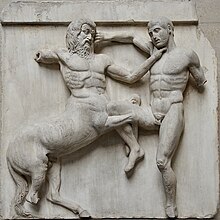
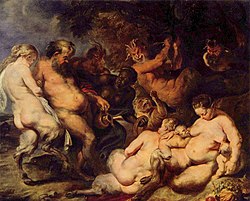
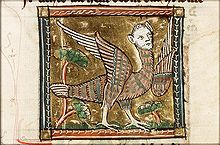


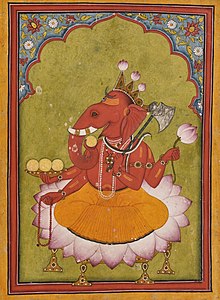
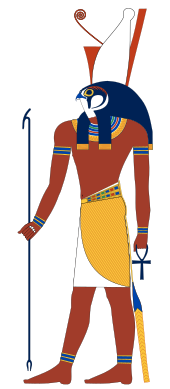
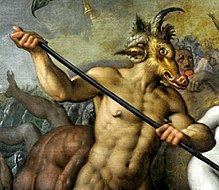





comment 0 comments
more_vert